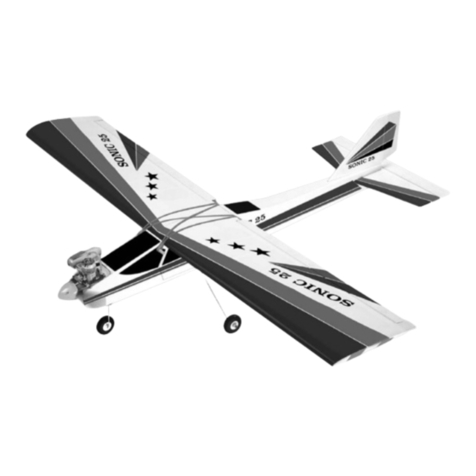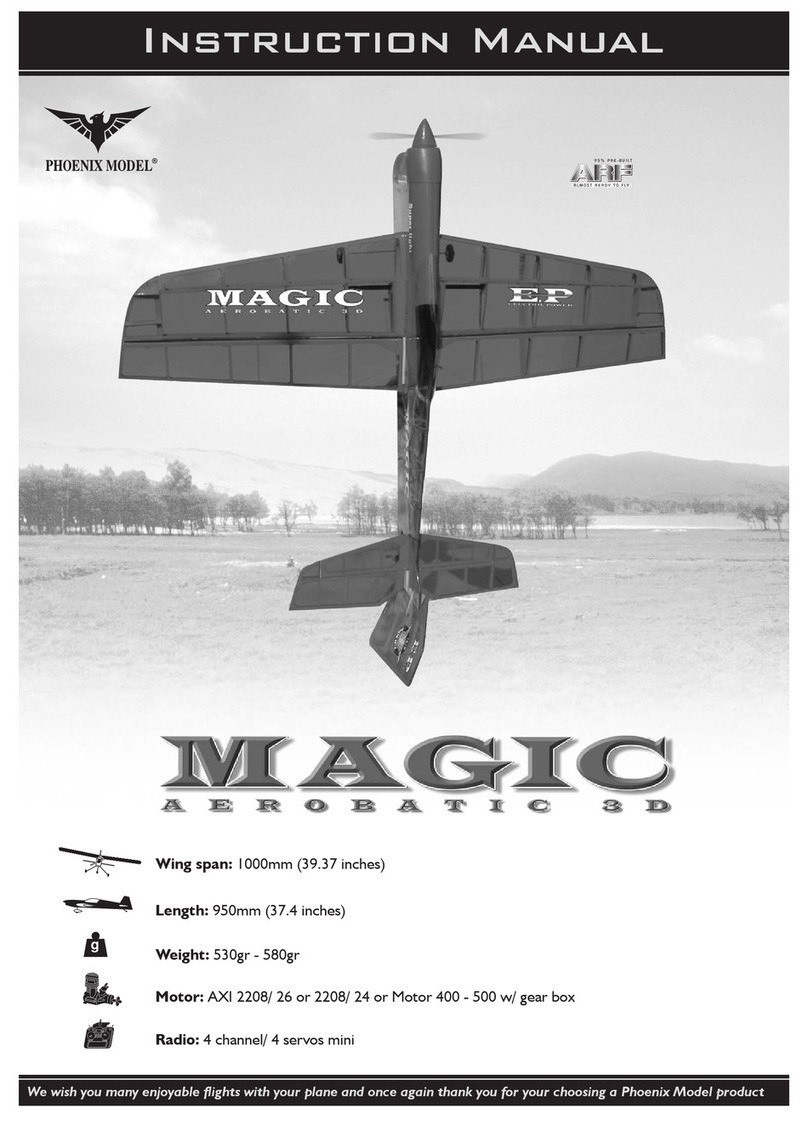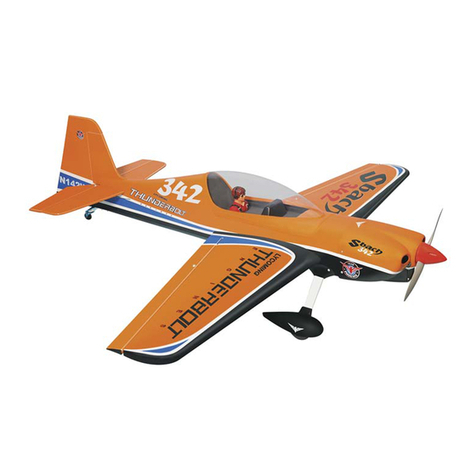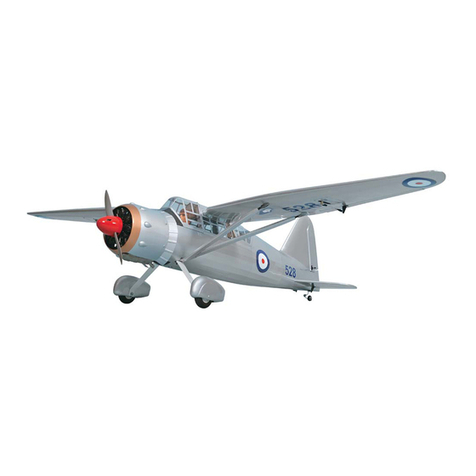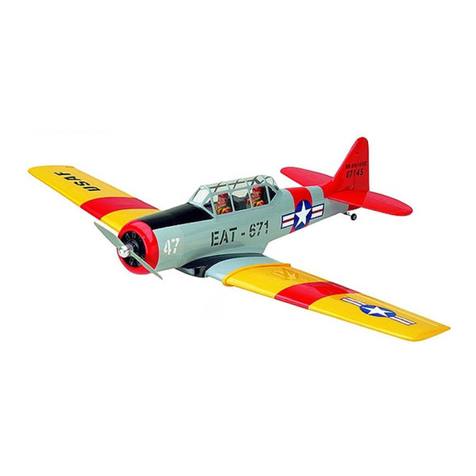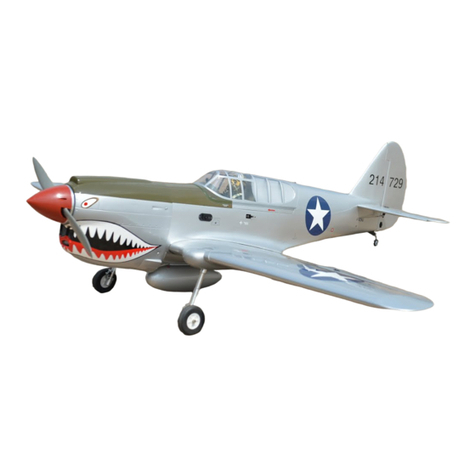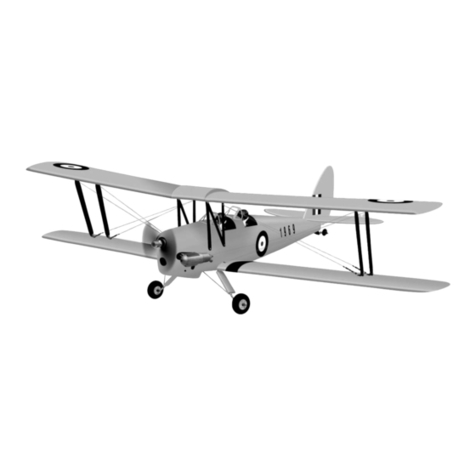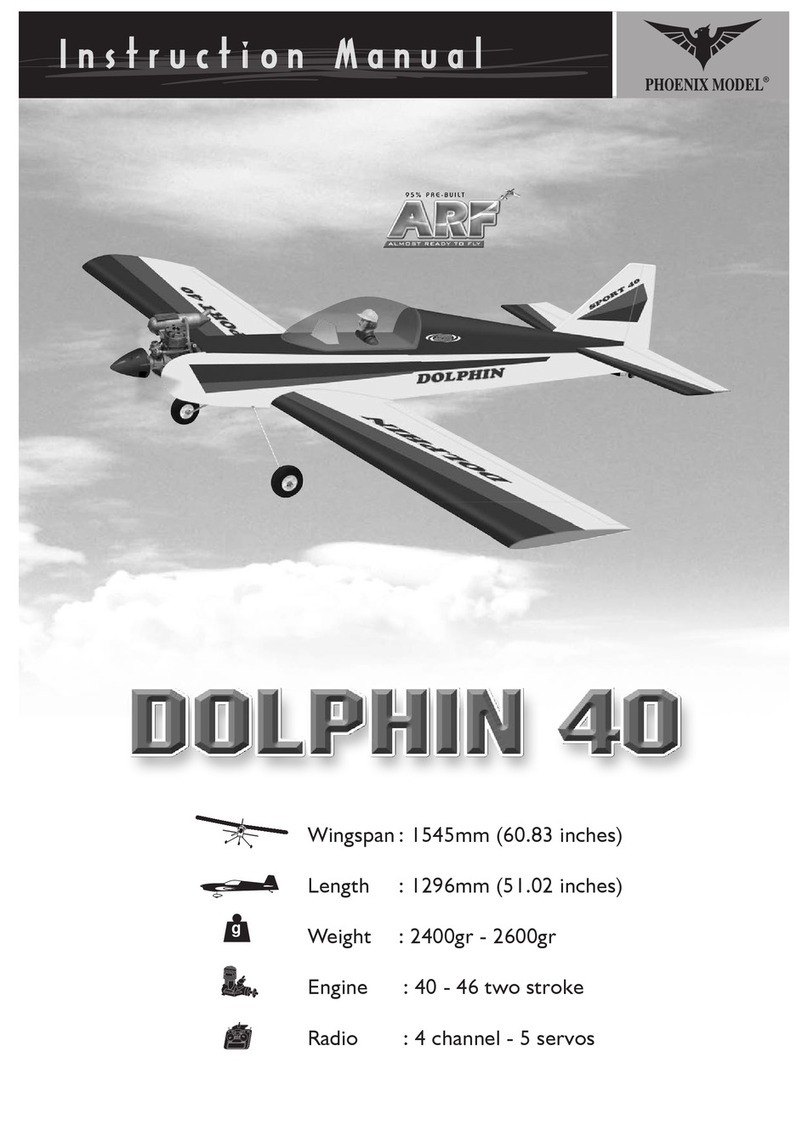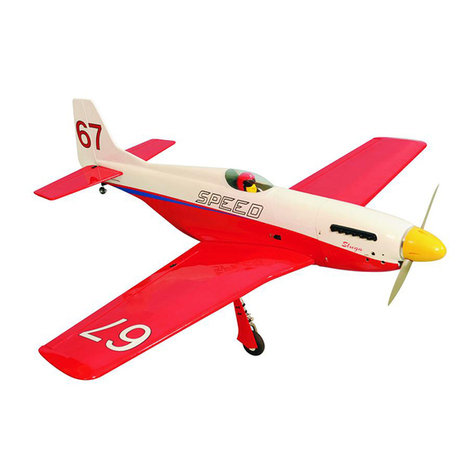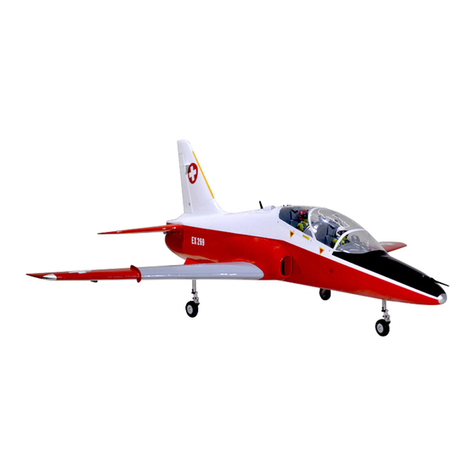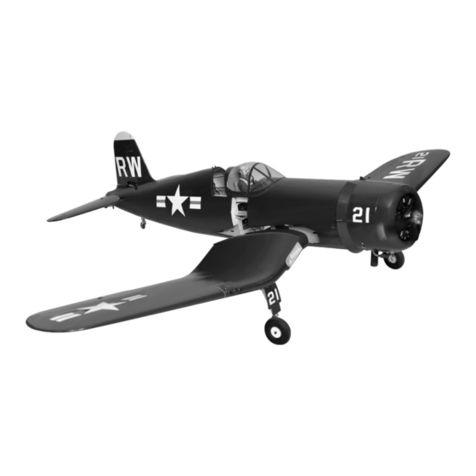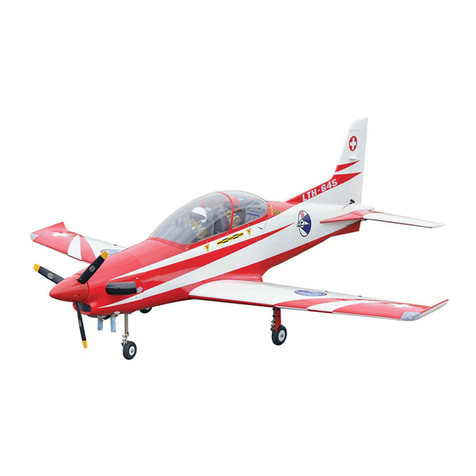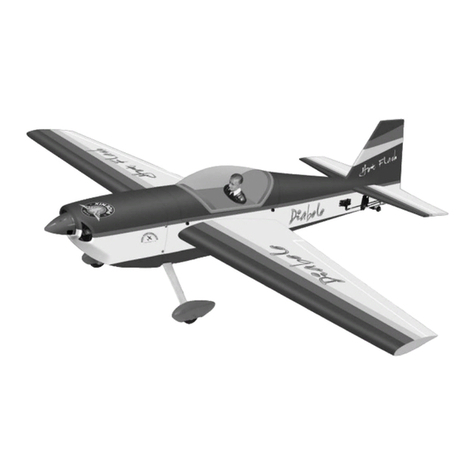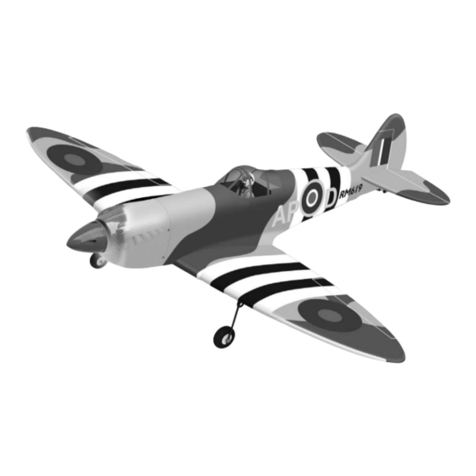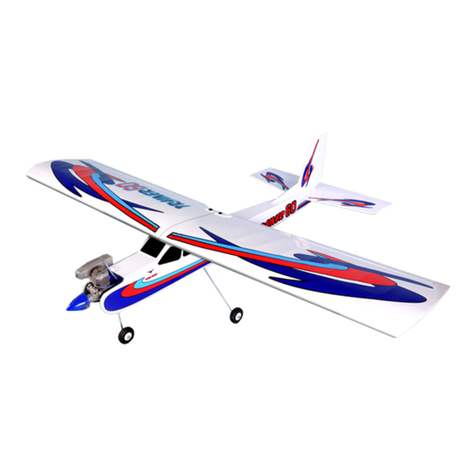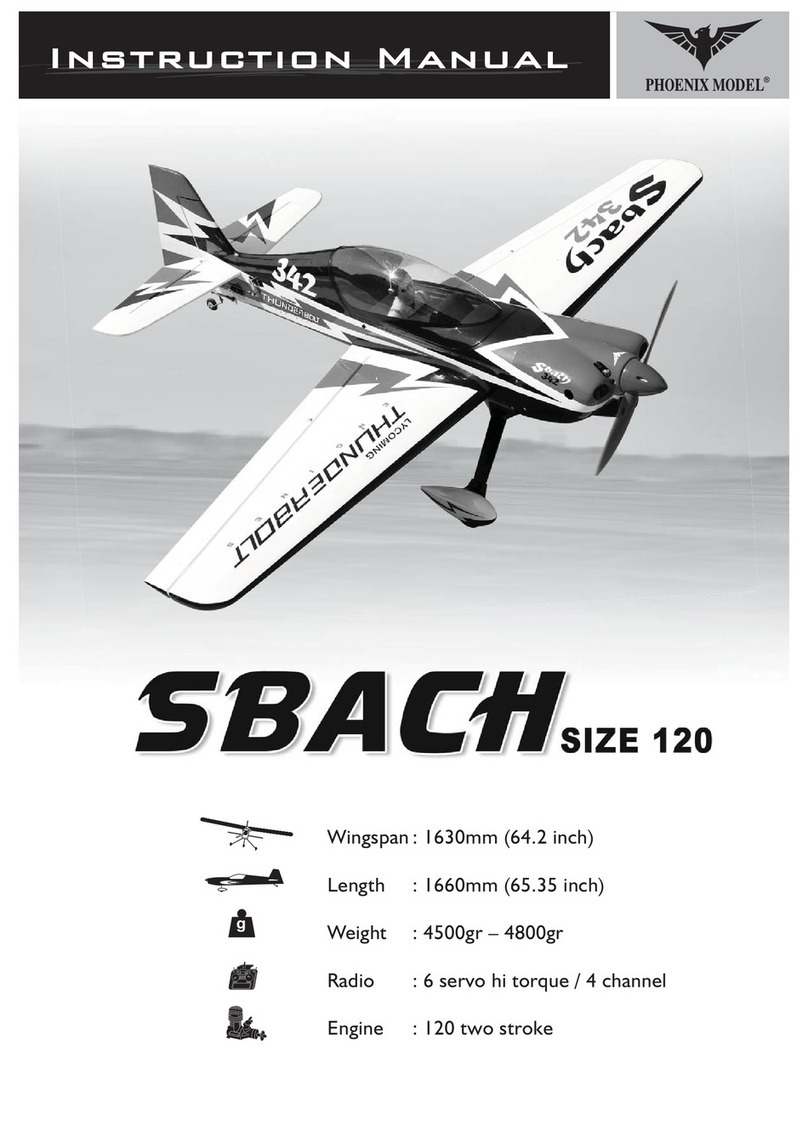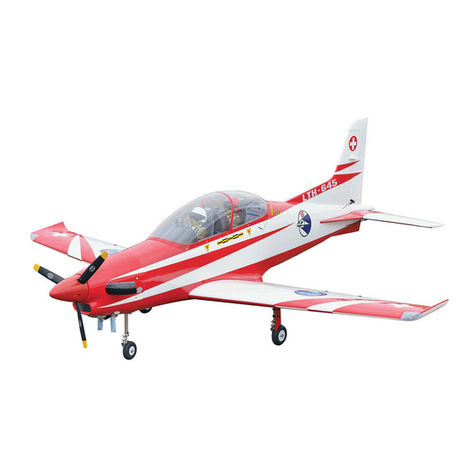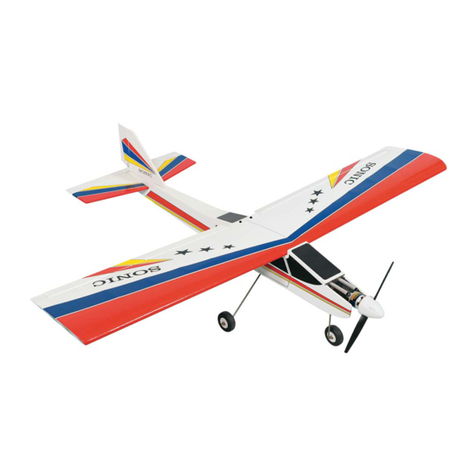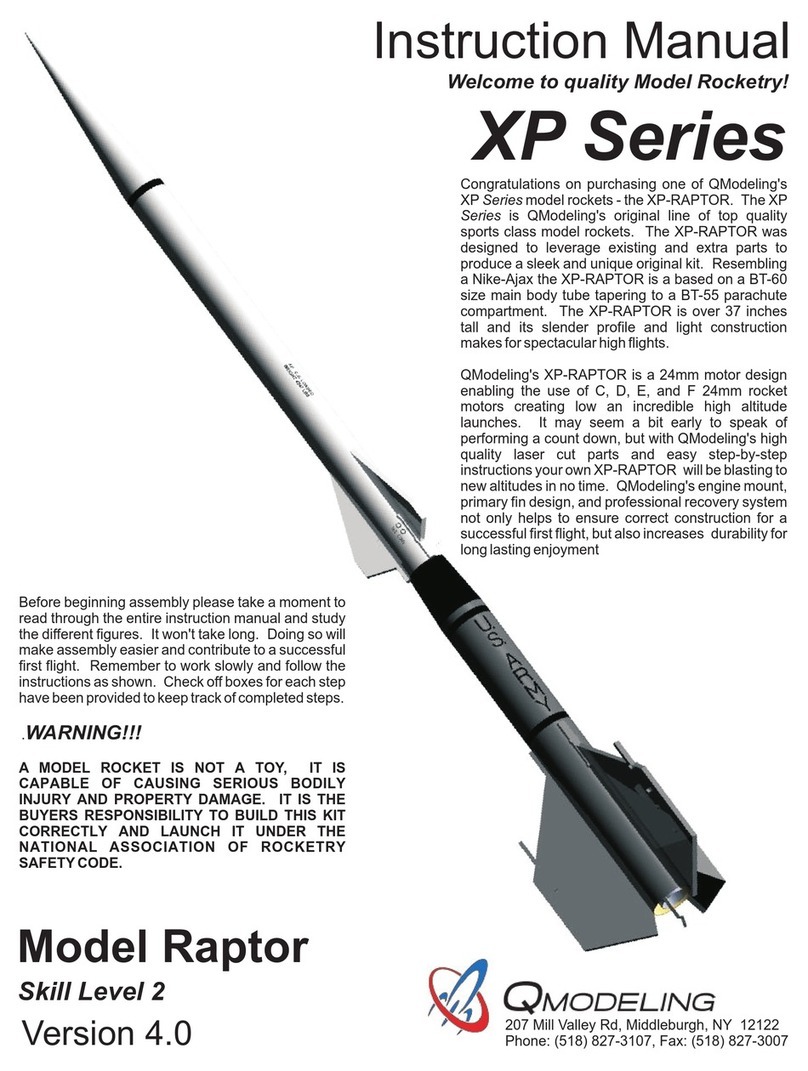
25. Using ailerons as a guide mark TE position on
centre section trailing edge. Lightly draw guide
line along TE.
26. Shape centre section trailing edge using
Aileron as a reference.
27. Mark position of aileron control horn. Draw a
line on underside of Ailerons to indicate extent
of shaping required for down going Aileron
relief. Shape ailerons and cut to length allowing
clearance for 0.8mm ply end plates and
covering material.
28.
When complete add 0.8mm ply end plates
using Superglue to both Ailerons and Centre
Section.
29. Cut slot for aileron control horn. Needs to snug
fit. Roughen surface and superglue in position
AFTER covering.
30. Give wing a final sand using 320 grade Wet &
Dry.
Covering & Finishing
1. The originals were covered in heat shrink film
(Profilm/Oracover). This has proved more than
adequate. Should you wish to cover in a
different material please take into account any
potential weight penalty that it may incur and
puncture / tear resistance / repairability.
2. Give the complete model a final sanding with
320 grade Wet & dry. DO NOT use a sanding
block on wing sheeting. It thins the sheeting on
top of the rib and seriously weakens the wing.
3. Before covering vacuum clean the model to
remove embedded dust to avoid ‘pimpling’
when covering.
4. Please follow the instruction for the covering
material being used. Normal procedure is to
tack the material at one end. Tack the other
end and then proceed to gently stretch and
tack along its length before sealing all along
the edges and shrinking with a Heat Gun.
5. Spray wing fairing and motor cowl to match
your colour scheme (rattle can) (Hycote gloss
white is a perfect match for white Profilm).
6. Fit aileron servo output arms in centre position.
7. Superglue
Aileron
control
horns in
position and
hinge
Ailerons
using
strip Mylar
ers in place.
supplied.
8. Centre Aileron servos using transmitter sub-
trim and adjust Aileron pushrods. When
satisfied tape servo cov
9. Fit controls, hinge rudder, carry out final
adjustment to elevator neutral and balance the
model including the wings (laterally).
10. Set the control movements as per the plan i.e.
Elevator +/- 10mm. Rudder +/- 30mm. Aileron
Up 16mm Down 13mm. Full up Elevator,
Landing Flap1 Down 6mm Landing Flap2
Down 12mm. Balance point 65mm +/- 5mm
from Leading Edge. Exponential is
recommended for both Aileron and Elevator
controls. Typically 30%. Landing flap will may
require elevator compensation to counteract
any change in nose attitude when deployed. It
is recommended that a pitch change check is
carried out at a safe height!!
11. If using 2.4Ghz R/C equipment it is
recommended that you re-bind / pair the
receiver to update failsafe settings after set-up
and before flying your Wallaby. Failure to do
this has resulted in a number of serious
accidents. Remember the Transmitter is first
ON and last OFF!
12. A few simple rules for electrics. In flight it is
normal for the battery / speed controller (ESC)
to get warm but if it gets hot then the reasons
could be insufficient cooling, too large a
propeller or the battery / ESC of too low a
specification. For the battery it could be due
poor condition, too low a ‘C’ rating allied to lack
of capacity. To avoid discharging the battery
below the recommended voltage always land
when you notice there is less power on full
throttle. When landing in foliage cut the throttle
immediately to avoid burning out the speed
controller.
Flying
When satisfied the model is set-up and ready to go
choose a suitable site and day to test fly it i.e. wind
not too strong or turbulent. If you are inexperienced
please seek assistance for the maiden flight. The
wing bands should the tight enough to stop the
wing moving in flight yet allow the wing to move if
model lands awkwardly. If set up correctly very little
trimming should be required. The Wallaby Mk2, as
previously mentioned, is a very lively model if set
up with extravagant control throws and is capable
of almost any manoeuvre that could be expected of
this type of model including sustained inverted
flight, inside and out side loops plus blink and miss
rolls. The only real limitation is your flying ability
and imagination!
Happy landings,
Stan
25/10/2013 11:42
